News
Shorty Jamieson: The DNA Evidence that Will Reverse a Well-Known Murder Verdict
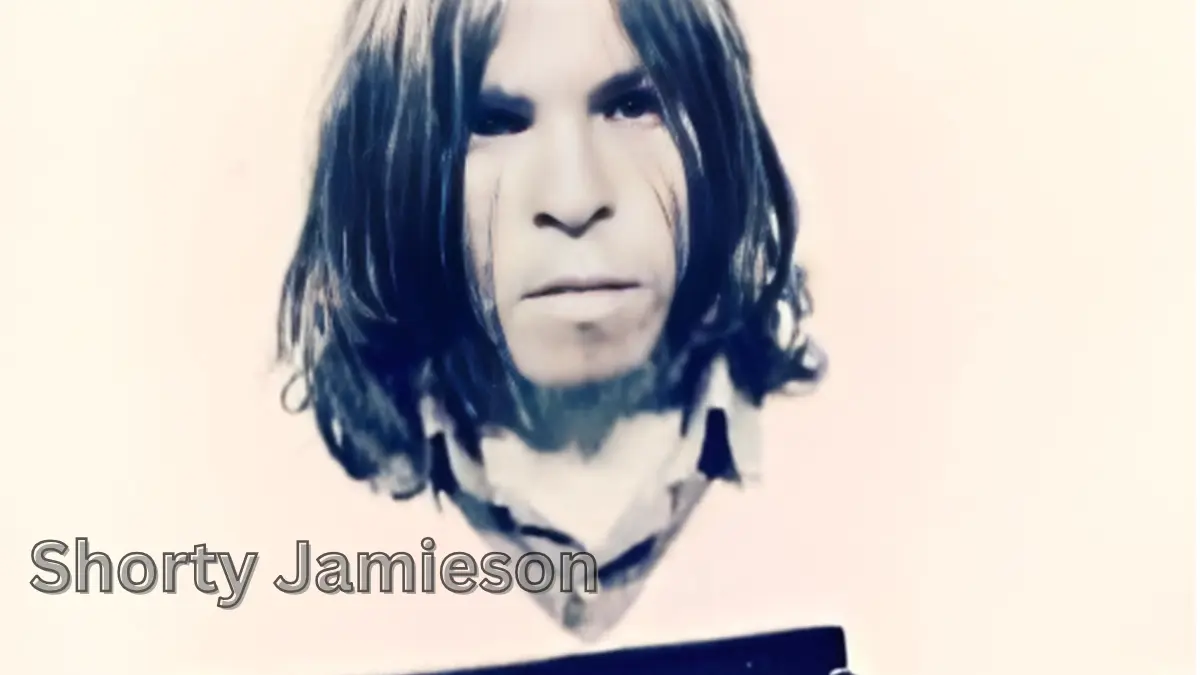
Stephen Wayne “Shorty” Jamieson is a 37-year-old prisoner who has served 37 years in the prison system of Australia due to one of the most heinous crimes that the country has witnessed, yet a new DNA evidence is casting grave doubts on the idea of whether the right person was convicted of the murder of Janine Balding that took place in 1988.
A Case of Murdering Janine Balding
The Alfredo Binet Crime
On the 8th of September 1988, Janine Balding, a 20-year-old bank teller, was kidnapped at knifepoint in the Sutherland railway station car park in Sydney, having worked in the city. When she was about to get into her car, she was stopped by a group of street children who assaulted her and got into her car with the aid of a knife before directing the car westward.
The next morning, Balding came across a shallow dam in Minchinbury with his semi-naked body tied and a rag over his mouth. She was raped and brutally murdered several times by being drowned. The sheer nature of the crime, which was in many ways equivalent to the 1986 Anita Cobby murder, broke her whole family and terrified the whole society.
The Accused and Convictions
Most suspects were rounded up soon: Bronson Blessington, 1a 4-year-old, Matthew Elliott, a 16-year-old, Wayne Wilmot, a 15-year-old, and Carol Arrow, a 15-year-old. The street youths, however, informed the police that there was a third accomplice, a man a bit older than they and referred to as Shorty by the street youths, but Wilmot referred to him as Mark.
Sixteen days later, two officers were arrested on the Gold Coast by a 22-year-old known as Stephen “Shorty” Jamieson. His lawyer Peter O’Brien claimed that Jamieson was stoned and still carrying a bottle of alcohol when arrested and was, therefore, totally unfit to speak, but he was questioned during multiple hours without being evaluated by a doctor.
The Controversy of Confession and Trial
Disputed Confession
In the police interview, Jamieson reportedly gave super normal detail concerning the night Janine Balding was murdered and signed a confession. This admission became the main testament of his guilt because there was no forensic evidence that could have implicated him in the offense.
Nevertheless, his co-accused was always asserting that he was arrested by the wrong person. As Matthew Elliott claimed in jail: We said to all the lawyers, Listen, you have the wrong shorty, this is not the real shorty. All four co-accused claimed that it was not Stephen Jamieson but Mark Shorty Wells who was present when the abduction, rape, and murder occurred.
Aborted First Trial
The fact that there was another suspect created enough concern that judge Jamieson decided to terminate the initial trial of Jamieson and have the police locate Wells and check into the matter. Wells was later located and made a statement to the police indicating he was involved, but was not arrested, neither put in a lineup nor his DNA collected.
Wells was not a reliable witness and was eliminated as a suspect, even though he had a case of schizophrenia. In 1990, Jamieson was retried with new witnesses and was found guilty, together with Elliott and Blessington, of murder and abduction, and was sentenced to life imprisonment without parole.
DNA Revolution and New Evidence
Critical DNA Exclusions
Bombshell DNA evidence was revealed in the NSW Supreme Court in December 2024. A black bandana that Balding had used to gag was investigated, showing five unidentified DNA profiles of men, none of which matched the DNA of Jamieson.
Clint Cochrane, an expert in the field of Forensic and Analytical Science Service with NSW, informed the court that Jamieson does not feature in the partial DNA profile of 11 genetic markers lifted off the bandana. The profile would fit one in five million people, but this would not fit Jamieson and his three other male co-offenders.
Jamieson supporters were literally gasping in the court as this exclusion was announced, but those on the side of Balding family including her brother David, did not react.
The Mark Wells Connection
The Queensland police already hold a DNA profile of Mark “Shorty” Wells on file, although the use of such a profile by the NSW police has been disputed in court. After being appealed, in February 2025, Justice Ian Harrison determined that Police Commissioner Karen Webb had the capacity to exercise her powers to grant the DNA testingto proceed with the request of Jamieson.
According to Justice Harrison, the testing was necessitated by the interests of justice and the interests of the people to uphold the integrity of convictions. The resulting failure to bring the investigation to an end by running the tests and carrying out the comparisons would, in my view, cause a long-lasting feeling of community discomfort.
The Bridge of Hope Innocence Initiative
Support and Professional Review
As of 2019, the Bridge of Hope Innocence Initiative (BOHII) at RMIT University has been investigating the conviction of Jamieson after many years of suspicion as to whether he was guilty and the police investigation was honest. Director Professor Michele Ruyters is the driving force behind the initiative, which supports the wrongfully convicted and makes Jamieson one of its main targets.
BOHII has uncovered several mistakes in their investigation that cast serious doubts on the culpability of Jamieson, such as factual evidence on misidentification and a lack of forensic evidence on him causing the crime. They have also introduced a level of academic rigor and resources in their analysis of the case that could otherwise not be accessible.
Background and Personal Circumstance
Childhood and Developmental History
Stephen Jamieson was born with the fetal alcohol spectrum disorder and was a ward of the state in infancy. This situation posed serious weaknesses which can have influenced his capacity to comprehend and react accordingly when questioned by the police.
His stature, which earned him the name Shorty, was a very essential point in the case of the confused identity. Jamieson and Wells are both referred to by the same nickname within the homeless population of Sydney, and this possibly caused the confusion that could have resulted in the incorrect arrest.
Life in Prison and Unrelenting Protests
Jamieson is a 58-year-old prisoner who has spent over half his life incarcerated, with his file indicating that he should never leave prison. During his time in prison, he has always held on to his innocence and has been making numerous efforts to appeal his conviction in different courts of law.
In 2002, his case was reviewed by the Police Integrity Commissioner, who investigated the police behavior related to the investigation, but this did not lead to the reversal of his conviction. Nevertheless, the advent of the DNA evidence has given fresh grounds to reverse his conviction.
Media Publicity and Community awareness
60 Minutes Investigation
A detailed investigation of the case of Jamieson was featured in the 60 Minutes program of the Australian TV channel Channel Nine in November 2024 under the title of Get Shorty where the possibility of a wrongful conviction is being re-examined by the public. The show investigated the DNA evidence, spoke with legal analysts, and brought to light the different issues expressed by various professionals regarding the quality of the original investigation.
The 60 Minutes inquiry served as a step towards educating the general populace on the issues surrounding the case and how one of the most hated criminals in Australia could be completely innocent of the types of crimes he was found guilty of.
Status of the Law and Planned Continuation
Supreme Court Review
The NSW Supreme Court is in the process of deciding to reopen the case with the new DNA evidence, as well as other issues with the initial investigation. Justice Ian Harrison has embraced the sensitivity the case attracts, though he has emphasized that justice has to be served and that justice must be observed.
Now the court is in the process of deciding on the feasibility of doing DNA analysis in comparison with a profile of Wells and the DNA found on the bandana that they have not identified. This testing may possibly give conclusive results on whether the wrong Shorty has been incarcerated for almost forty years.
Justice System Implications
The Jamieson case demonstrates the existence of vital challenges in the justice system of the country, such as the ability of confessions taken during the interrogation of vulnerable people to be valid, the significance of effective forensic testing, and the necessity to perform an in-depth investigation of other suspects.
According to Justice Harrison, it should be considered whether there is the possibility, however remote or not, that an injustice could persist. The case reminds us that it is necessary to make sure that the convictions are supported with credible evidence and follow the procedures.
Looking Forward
The case of Stephen “Shorty” Jamieson is one that is at a crossroads. The DNA evidence arose after 37 years of imprisonment and continuous protest of innocence to either acquit him or to affirm his guilt beyond doubt. The current court case is not only the survival of a single man, but also the wholeness of the Australian justice system and its effectiveness in addressing any possible miscarriage of justice.
The question whether Jamieson will be finally cleared or whether the DNA evidence will be inconclusive is yet to be answered. What is absolute is the fact that this case will still bring about relevant concerns regarding mistaken identity, forensic evidence and how vulnerable people are treated in the criminal justice system.
News
Terry McCrann: a giant of Australian media commentary
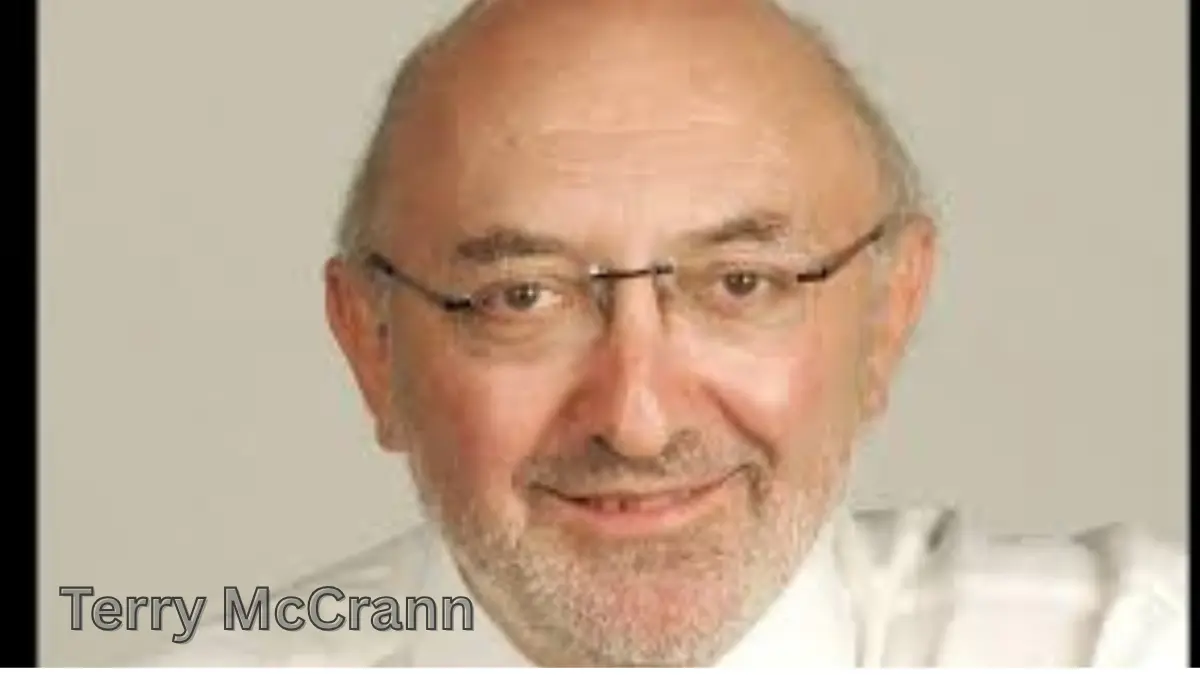
In the media world of Australia, Terry McCrann is a well-known name. For decades, McCrann’s insights have helped Australians understand complicated financial issues. He is an award-winning journalist and an expert on business and economics. He is one of Australia’s most unique media commentators because of his clear, no-nonsense writing and fearless analysis.
This article looks at Terry McCrann’s career, the important things he did for journalism, and how his writing changed the way people talk about things in Australia. It was written with Australians in mind and is mostly about McCrann’s legacy and how his work is still important today.
Early life and pathway into journalism
Terry McCrann grew up in Melbourne and went to Monash University, where he learned the skills he needed to become a journalist. His path quickly took him to the centre of Australia’s business media, where he improved his skills and developed the clarity and directness that still define his style.
Career highlights and roles in the media
For more than 40 years, McCrann has written for some of Australia’s most respected magazines and newspapers.
- Herald Sun (Melbourne): This is where he wrote most of his important columns about economic trends, business issues, and government policy.
- The Australian and The Daily Telegraph: A regular writer and analyst for national economic issues.
- Broadcast media appearances: McCrann often appears on TV and radio as an expert commentator, helping to make financial news easier to understand for regular Australians.
A specific style of economic analysis
Terry McCrann has long been known for his forceful and unusual approach to news coverage. He does not mince words and never shies away from conflict.
McCrann’s economic analysis was never simply about figures on a paper. He linked economic policy to real-world outcomes, making him a powerful voice at pivotal points in Australian history.
- Champion of Free Markets: McCrann has always supported free-market principles, lower taxes, and reduced government spending. He believes that private enterprise and human initiative are the primary drivers of economic progress. This position has had a considerable impact on conservative thinking in Australia.
- Critic of Institutional Overreach: He has spoken out against institutions such as the Reserve Bank of Australia, often claiming policy blunders or a lack of accountability. He frequently wrote about the “Canberra bubble,” alleging that politicians had no concept what businesses and families were going through.
- Predictive Commentary: Over time, McCrann gained a reputation for making outlandish forecasts about the economy, interest rates, and the market. His willingness to take a stand prompted readers and decision-makers to examine other options, even if he was not always correct.
His direct and usually provocative style guaranteed that his pieces were not only read, but also debated in pubs, boardrooms, and Parliament.
Major contributions and notable stands
Terry McCrann’s career has been distinguished by his courageous reporting on some of Australia’s most significant political and economic events. His insight was a significant counterbalance to national debates, impacting public opinion and frequently putting him at odds with the political establishment.
The Keating and Howard years
McCrann was a key critic on economic reforms throughout Hawke-Keating and Howard governments, which significantly impacted the country. He extensively examined Paul Keating’s proposals, which ranged from allowing the dollar to float to allowing the market to establish prices. He applauded market-based developments while fiercely criticising government spending. He eventually became a strong proponent of several of the Howard government’s economic policies, including the Goods and Services Tax (GST) and changes in how corporations interact with one another.
The Global Financial Crisis
McCrann’s editorials were critical of the Rudd government’s approach to the Global Financial Crisis in 2008. He was well-known for opposing the massive stimulus packages, claiming they were a waste of government dollars. His analysis questioned the long-term consequences of so extensive government engagement. This was a contentious point of view at the time, but it has since become an important component of the economic debate.
Scrutinizing the energy debate
McCrann has been a well-known and influential figure in Australia’s contentious energy debate in recent years. He has consistently opposed what he regards as an early and costly transition to renewable energy, claiming that it would jeopardise the grid’s reliability and affordability. His columns have supported the idea that fossil fuels, especially gas, are necessary for a stable energy supply. This has made him a key player in the ongoing national debate about climate policy and its effects on the economy.
In recent years, McCrann has gained prominence and influence in Australia’s heated energy debate. He has persistently resisted what he sees as an expensive and hasty transition to renewable energy, stating that it will risk system reliability and affordability. His editorials have backed the notion that fossil fuels, particularly gas, are required for a reliable energy supply. This has elevated him to the forefront of the current national debate over climate policy and its economic implications.
Important issues and comments
Although Terry McCrann has worked across many areas, some of his contributions are particularly noteworthy.
- Analysis of the Budget and Economic Policy: McCrann provides thorough oversight and practical analysis, whether he is looking at a federal budget or criticising new tax proposals. He has always pushed for responsible fiscal management, smart spending by the government, and openness in making economic policy.
- Banking, retirement savings, and housing: McCrann talks about the Australian banking system, what changes to superannuation mean, and how housing prices are changing. His writing helps Australians understand how changes in the economy or the rules could affect their own money.
- Big Projects and Energy: McCrann is known for going against the grain in national debates about energy prices, energy security, and infrastructure. He also warns about the dangers of making big changes.
Awards and recognition
- The Graham Perkin Australian Journalist of the Year Award: In 1987, Terry McCrann was given this prestigious award for his outstanding work in journalism that had an impact on the whole country.
- The Quill Awards for Journalism: He has also won several Quill Awards, which show how well-known he is for reporting that is both fearless and accurate.
Major news outlets regularly cite and interview McCrann, which shows how important he still is.
The McCrann legacy: shaping a generation of journalism
Terry McCrann has had an impact on more than just his own columns. He has set a standard for rigors, opinionated, and easy-to-read writing that has shaped a generation of Australian reporters and commentators. He showed that financial news didn’t have to be limited to the business pages; it could be news that made the front page and got people talking.
His legacy is one of courage and strong convictions. In an era where media criticism might appear sanitised or echo-chambered, McCrann’s work demonstrates the power of a single, well-argued voice. He proved that a credible journalist can not only face world leaders but also openly question them and become the voice of the people
Although he has now stopped writing regularly, his work still serves as a collection that reflects Australia’s social and political landscape over the past fifty years. If you want to know what has shaped modern Australia, Terry McCrann’s commentary archives are a must-read. His career is proof of how important it is for a democracy to have brave and independent journalists.
News
Who Is Gemma Tognini? Australian Media Personality and Business Leader who is influential
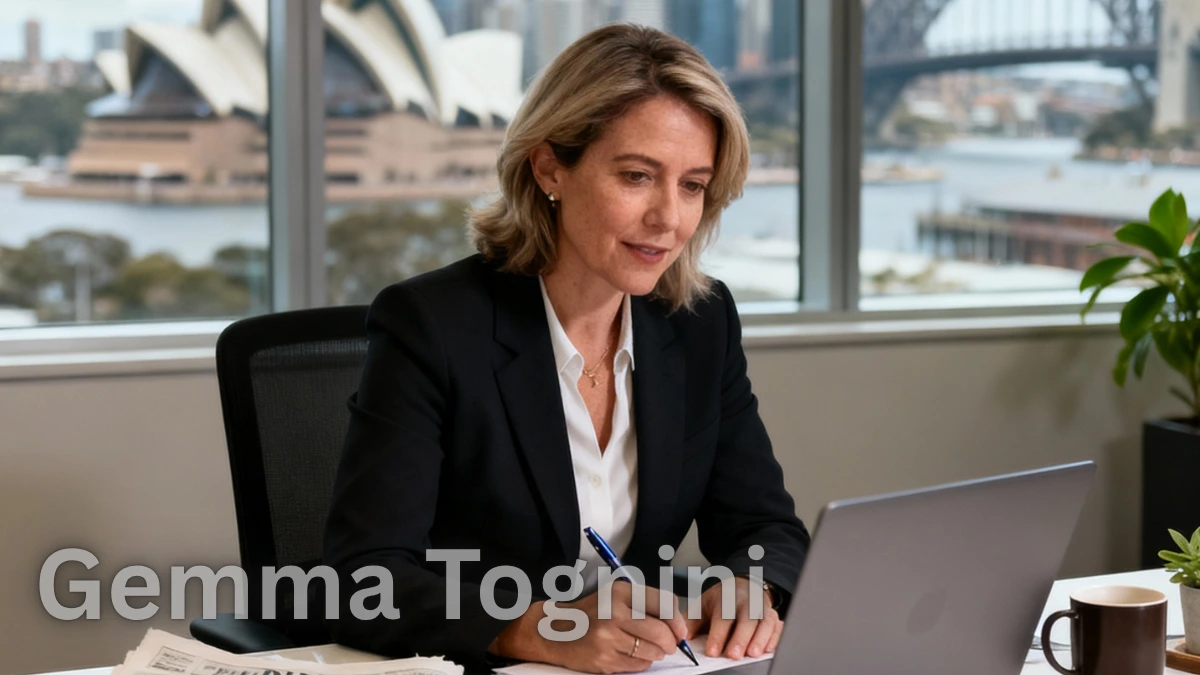
Gemma Tognini has cemented her name as one of the most identifiable faces in media and business in Australia, where she balances her careers in strategic communications, opinion columnist and award-winning entrepreneur. Having started with a modest investment in a computer with a price tag of $500 and a spare room, Tognini rose to become a nationally admired commentator with The Australian newspaper, a feat that can be attributed to her sheer determination and effective thinking in the creation of a personal and professional brand.
Career History and Minority
Beyond Journalism to Entrepreneurship
Gemma Tognini started her career in journalism and worked for almost ten years as a senior journalist and Chief of Staff in the Seven Network between 1996 and 2003. Her experience as a television journalist gave her the building blocks that would come in handy in her business career and her career as a media commentator.
In 2003, Gemma Tognini, having felt the desire to have more self-determination and thinking she possessed a talent for being a strategic advisor, took the radical step of quitting her high-profile television career. The only thing she had was a mobile phone and a $500 computer with which she established GT Communications in her spare room in Perth.
GT Communications Inc. Success Story
What began as a one-person operation has grown to be a national strategic communications firm, with offices in Sydney and Perth. GT Communications deals with corporate PR, reputation management, consumer PR, media training and crisis management.
The company’s customer base cuts across wide industries such as the energy, property, infrastructure, professional services, mining, health and tourism. Recent client victories have been made with such clients as the National Breast Cancer Foundation, The Fullerton Hotel Sydney and Angus Knight Group.
Media Career and Commentary
The Australian Columnist
Gemma Tognini is a social commentator writing opinion in The Inquirer section of The Weekend Australian since November 2020, as an opinion columnist. Her columns cut across such a broad spectrum of subjects, including gender pay equality, up to the challenges faced by workingfamiliesy making her one of the most popular columnists in the newspaper.
The writing has been described by Tognini as the capacity to access dialogues that run within boardrooms and breakfast tables across Australia, and this gives what ordinary Australians can relate to.
TV/Radio Presence
Between 2017 (February) and 2024 (July), Gemma Tognini joined Sky News Australia regularly, as a panellist on such shows as Credlin, Kenny on Sunday, and HeadsUp. She has also been a commentator on other networks and is a sought-after voice on political and social matters.
Biography and Life
Is Gemma Tognini Married?
Gemma Tognini is wedded to her husband, Langer whom she cannot write enough letters. She has also shared her personal experience, including having been divorced in the past when she was 39. She has been quite frank about the identity crisis that followed and said that she did not know who she was without that marriage.
Family and Heritage
Tognini belongs to the small, close-knit family and has written in her columns about her background. Her mother was the daughter of a middle-class Australian family in the Graceville suburb, Brisbane, and her family background consists of Italian ties – she achieved the Diploma of Italian Language at Università per Stranieri di Perugia.
Gemma Tognini, who is currently living between Sydney and Perth, has also discussed the difficulties of not being with family, especially after her father died in mid-2019.
Awards and Recognition
Business Achievements
The entrepreneurial achievements of Gemma Tognini have been rewarded with awards of high status:
- Winner in Telstra Business Women’s Awards (2014)
- Finalist, Telstra Business Awards (2017)
- Business Owner of the Year
Professional Qualifications
Tognini has a great resume that supports her experience:
- Ba (Journalism and Politics) Curtin University (1991-1993)
- Member of the Australian Institute of Company Directors (2011)
- Past Non-Executive Director positions with Surf Life Saving Western Australia, The Salvation Army (WA) and the Starlight Children Foundation.
Communication Philosophy and Approach at GT
Relationship Over Transaction
The fundamental principle of the business strategy of Gemma Tognini is relationship before transaction. This principle is an indication of her faith in genuine relations and ethical business, where long-term relations are valued more than short-term benefits.
Team of Specialists
GT Communications is pleased to be a group of specialists and not generalists, a group of former journalists, government workers and lawyers who now work in corporate communications. This experience enables the company to offer clients strategic guidance at the top level with a wide industry-based network.
Present Impact and Perspective
As a multifaceted worker, Gemma Tognini still influences the discourse of the Australian people. She is a rare speaker in the modern Australian society with her special status between corporate advisory, media commentary and business leadership.
The fact that she has recently grown GT communications to Sydney is indicative of her further growth aspirations, and her regular presence in the media ensures she is not limited to the corporate realm of conversation, but rather her presence is felt in wider social and political discourse.
Gemma Tognini is a successful businesswoman and a powerful commentator who represents a new generation of Australian business leaders in their understanding of the power of meaningful communication and strategic relationship creation. Her experience of transforming a spare room business to national prominence makes her a role model to would-be entrepreneurs, and her media presence remains a source of discussion among Australians on both ends of the political spectrum.
News
Tayla Brailey: Sydney Teacher at the Heart of a shocking abuse scandal
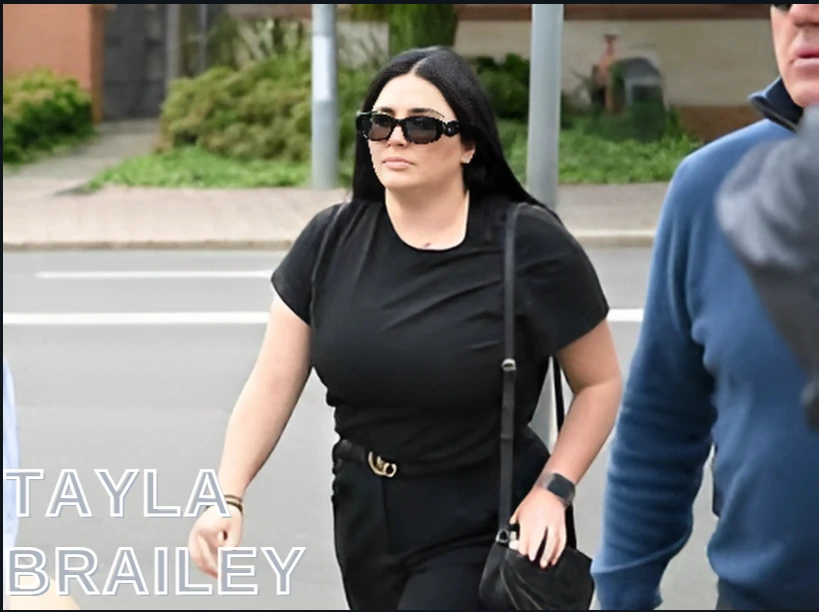
It has become a gripping story, and it has been happening in the silent suburbs of southwest Sydney, where children run about with footies across the ovals and teachers mould young lives. Tayla Brailey is a 30-year-old PE teacher whose headlines were catapulted into the news last year due to the sexual abuse allegations with her students in Lurnea High School. Since her recent wedding joy to the courts full of heart-wrenching family, this case has brought some difficult questions of trust, boundaries and protection of the Aussie kids in our schools. With information still emerging in the year 2025, this is what we know about Tayla Brailey, the woman, the charges and the backlash that has left the Wollongong community in shambles.
Who Is Tayla Brailey?
Tayla Brailey is 31 and grew up in the Illawarra area of the Wollongong region in New South Wales, and then forged out a career in education that would have been the subject of a feel-good arvo telly special. In 2017, she graduated University of Wollongong with a Bachelor of Physical and Health Education and secured a job with the NSW Department of Education some time later. Being a PE teacher in Lurnea High School, a diverse, working-class area with a multicultural feel and community footy leagues in the southwest of Sydney, Brailey was the type of person who would organise year 10s to play touch or find out who is most fit during a fitness challenge. Parents and colleagues have said she was energetic and committed, the type of teacher that would share school charity events on Instagram, such as when she shouted out a Wollongong youth group in 2020.
Behind the whistle and gym mats, however, Brailey had something of his own life that shouted young love. In December 2021 engaged to high school sweetheart Isaiah Rizza, the couple got married in a beautiful Wollongong wedding on September 30, 2023 – only 11 months before her world was upside-down. Her mum posted photos on her Facebook page that were captured by social media, depicting a smiling bride in white amongst mates in a Bali hen do, sipping cocktails at Finns Beach Club. It was the classic Aussie dream: Beachy vows, Barbie weddings and huge expectations. Little did they aware that the fairy tale was going to become ugly.
Through social media, Brailey created an image of a fun-loving Sydneysider – believe Insta reels of workout videos, footy clips and even a cheeky appearance on Channel Seven’s The 1% Club quiz program earlier in 2024, whereby Brailey dazzled the audience with her fast thinking. Having 390 searches a month regarding Tayla Brailey’s Instagram, Aussies were eager to find out who was behind the profile. However, by September 2025, these accounts are under bail, and the bail accounts are extremely restrictive under the lockdown conditions that prohibit the use of social media – a sobering lesson of how an erroneous step can discontinue an online presence in the middle of the night.
Career: Tayla Brailey: UOW Graduate to Lurnea High School
To a lot of young Aussies, who look at teaching, Wollongong Uni is sounding like a call to arms – salty ocean breeze, camp barbecues, that post-graduate buzz of doing good. Tayla Brailey embodied that. She caught her degree and then fled into the world of public schools, first in PE – a profession that means creating resilience, whether avoiding tackles in league or completing a 5km run. Lurnea High was built in 1965 and is your typical all-inclusive high school: 650-ish students in years 7 to 12, a diverse blend of cultures and a track record of delivering good citizens to the community. It is the kind of environment where teachers are familiar, and they hold sausage sizzles and end-of-term barbecues.
Brailey began there in 2017 and soon became a regular in the sports program. Tayla Brailey, teacher, Lurnea, accumulates searches due to the fact that locals recall her as the coach who had furred the underdogs up at inter-school carnivals. But in July 2024, that was all broken. There were reports of improper contact with a 17-year-old student, and she was dramatically arrested on August 6 at the school gates – handcuffed in the car park and colleagues in disbelief. The government of NSW terminated her without pay on the spot, which initiated counselling among rattled employees and children. It is another school community gut-punch, particularly in close-knit Sydney burbs where the news travels quicker than a TikTok virus.
What Happened: The Arrest and Charges?
The charges fell like thunder on the Harbour Bridge. According to the police, it began as an innocent thing: a boy of the 112th year added Brailey on Snapchat at the beginning of July 2024. Conversations got sexual, nude-nudehotos were traded, tapes of Brailey in compromising positions. She supposedly invited him to her home in Wollongong to have a no-tell-anyone affair, and they had unprotected sex in the back seat of his car when he was at school. She targeted a 16-year-old, days later, according to cops, sending sexual videos over 12 days on Instagram, before assaulting him in her classroom, provoking deeds that surpassed all red lines.
First, Brailey was charged with having sex and touching an individual under special care, as well as aggravated assault, with maximum sentences of up to four years. She was released under strict bail (house arrest, passport surrendered), but on August 16, was rearrested at her Mangerton home with six additional charges, including inciting sexual touching, accessing child abuse material through carriage service. According to court records, the scene there was frenzied, as Brailey broke down hysterically upon confrontation and started crying her eyes out, screaming, I am going to jail, aren’t I? Lose my family, husband, job.” She confessed at least part of it to the police, turning over her phone – a treasure trove of proof, such as CCTV and vids of the victims.
As early as early 2025, the nature of the charges changed with some child abuse material counts reducing in July but new material in March, which forced her committal hearing to May 21 at Campbelltown Local Court. Nothing yet; she has kept quiet, but the bell has been ringing – she is not allowed at Lurnea or in the schools or in any of the socials.
2025 Court Appearances and Recent News
Go to September 2025, and the case of Tayla Brailey is just in full swing as the court makes its decision over the case described as the Tayla Brailey update by concerned Australians. August 7, 2024, the day of her first court appearance at Liverpool Local Court, was ugly: video teleconferencing in custody, with her head in her hands, as Maggie Imad Abdul-Karim spit-roasted the dangers. She was surrounded by family – teary parents, sobbing hubby Isaiah in the lobby.
The hugs at Campbelltown in October 2024 were at the hands of mum and dad, and there were back-to-back abuses along with the details on the consecutive days. In April 2025, there came a bail modification to outpatient care – dressed in black, parents present, she received the green light to get mental health assistance with a preliminary diagnosis of bipolar disorder, including hypersexuality. Negotiations of charges in July; some of them were withdrawn, the main ones remaining. Latest: May 2025 committal mention, including all evidence by October 29. X (formerly Twitter) is buzzing with controversy – the posts about gender bias in sentencing on Reddit are full of rants, and the posts about the safety of the app, like Snapchat. It remains on the front page of media such as the Daily Telegraph and SMH, which contributes to 8,100 monthly searches of Tayla Brailey.
Personal Life: Family, Husband, and the Heartbreak
Is the man who vowed better or worse, Isaiah Rizz, a rock, or was he? The registry broke the news of the Wollongong marriage of the couple, yet he came out at the court a wreck with tears streaming down his face, and a charge of abuse ringing in his ears. Brailey’s parents? Steady – arm in arm at the dock, picking her up after posting bail, deflecting journos with a silence. There is nothing about divorce, but she is sequestered in their pad at Illawarra, under curfew. The soapie-level drama is indicated by searches on Tayla Brailey’s husband (70 monthly): starting with Bali bridesmaid selfies and ending with this.
Effect on Lurnea High School and the Community at Large
Lurnea High is no stranger to the spotlight in 2015 – Wikipedia even gives prominence to the scandal. Children received trauma counselling; employees, a wake-up call on alert. It has struck home in schools in Australia, where PE classes can build relationships, yet require hard-nosed morals. Imagine the job of a tradie on the ground: a fall could cost the entire team. It has nationally catalysed grooming conversations through apps – Snapchat, Insta – and occurs in Bris-to-Bris cases. To the southwest Sydney families, it is personal: barbecues are now talking about that teacher at Lurnea.
Lessons of the Tayla Braley Case
The story of Tayla Brailey, UOW graduate to courtroom defendant, is a tough tale for all the Australian parents making school lunches. It highlights the divine faith in teachers and the darkness that may creep in DMs. With her case likely to go to trial, there is one thing that is clear:r, prevention is better than headlines. Keep updated on school safety, freely discuss red flags with children on the internet, and back up such organisations as the safeguarding push by the NSW Department
-

 Business2 months ago
Business2 months agoHow to cancel your Optus plan: A step-by-step guide for Australians
-

 Business2 months ago
Business2 months agoHow to add Flybuys to Apple Wallet: A complete guide for Australians
-

 Business2 months ago
Business2 months agoEveryday Rewards Woolworths loyalty program: How Australians can save more every day
-

 Business2 months ago
Business2 months agoAn Australian traveller’s guide to senior caravan insurance
-
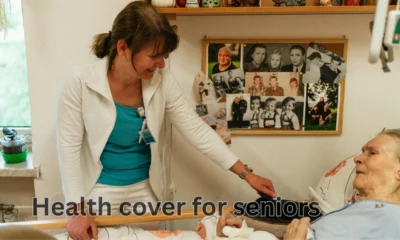
 Business2 months ago
Business2 months agoHealth cover for seniors in Australia – Complete 2025 guide
-
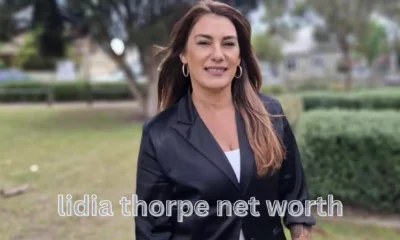
 Politics2 months ago
Politics2 months agoLidia Thorpe Net Worth 2025: Salary, Assets, Career, and Financial Journey
-
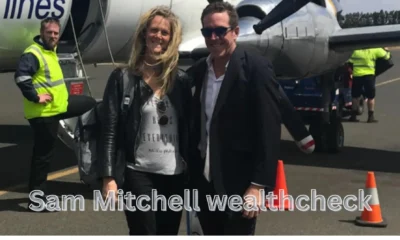
 Business2 months ago
Business2 months agoADM Capital wins a $36 million court case against Sam Mitchell WealthCheck: The story of how an agricultural empire fell apart
-
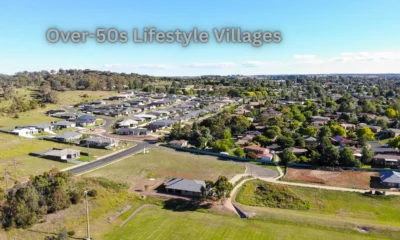
 Business2 months ago
Business2 months agoOver-50s Lifestyle Villages in Western Australia: Comfort & Community



